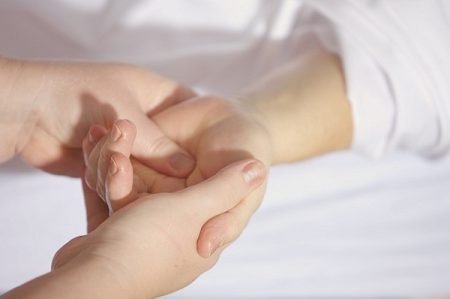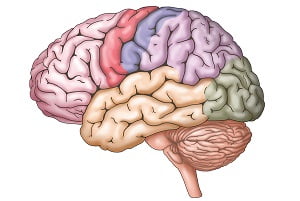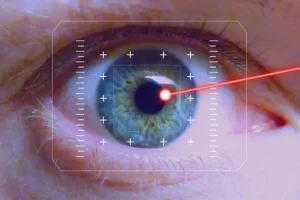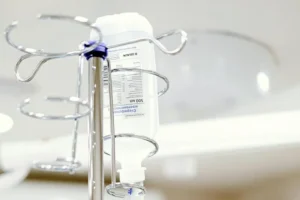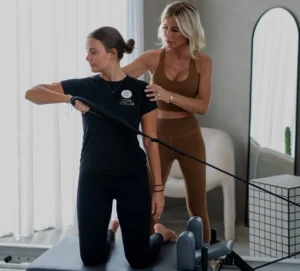What Exercies to Perform if You Have Carpal Tunnel Problem?
- Updated on: Jul 10, 2024
- 6 min Read
- Published on Sep 27, 2019
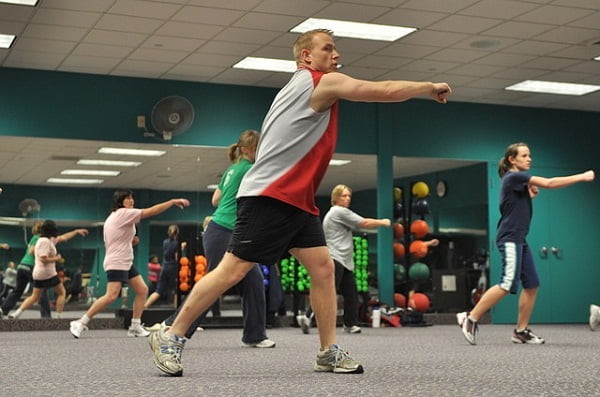

Can exercises treat carpal tunnel syndrome? Can you fix carpal tunnel syndrome with exercise? Can you treat carpal tunnel without surgery?
The answer to the question – can you fix carpal tunnel syndrome with exercise – is probably not. It is unreasonable to say that carpal tunnel exercises alone can relieve symptoms, such as pain and numbness and can treat it.
These carpal tunnel syndrome exercises can help in alleviating the symptoms of mild to moderate carpal tunnel syndrome and are most effective when combined with other treatments, such as behaviour changes or wrist splints. In case you are suffering from severe symptoms of carpal tunnel syndrome, need of a surgery to get relief is very much inevitable.
Chronic compression of the median nerve as it passes under the transverse carpal ligament at the wrist through the carpal tunnel is the main cause of carpal tunnel syndrome. One type of carpal tunnel syndrome exercise known as nerve-gliding exercises might help the normal movement of median nerve, but might worsen the symptoms too. If you are performing this exercise while your median nerve is trapped, it can do severe injury to the nerve and can leave it stretched and irritated.
Despite having limitations, carpal tunnel syndrome exercises might help in several ways such as:
- To complement another treatment such as changing your activities, wrist splinting or corticosteroid injections.
- To prevent nerve scarring after carpal tunnel surgery. Exercises which improve range-of-motion of your wrist might help in healing significant trauma to the wrist.
Consult your healthcare provider regarding the best suited exercise for you and start them gradually to ensure they don’t cause more harm than good.
More: Carpal Tunnel Pain: What Relieves Carpal Tunnel Pain?
More: Carpal Tunnel Syndrome (CTS): Causes, Symptoms, Diagnosis, Treatment
What are the exercises to relieve your carpal tunnel pain?
People with mild or moderate symptoms of carpal tunnel syndrome can get some help to relieve the symptoms from a few simple exercises. But it should be kept in mind that you will get the best results if it is being complimented with other treatments, like using a brace or splint or medical treatment.
You should not consider these carpal tunnel exercises as normal gym exercises. If it hurts, take a break. Symptoms can get much worse if you are pushing for it forcefully. You should start them gradually and see how it goes. If you are having trouble doing any exercise or if you think it’s not suitable for your condition, consult your doctor and talk to him/her about the issues.
Types and purpose of various CTS exercises
There are various types of carpal tunnel syndrome exercises (CTS exercises) such as for:
- hand exercises for carpal tunnel syndrome
- wrist exercises for carpal tunnel
- wrist strengthening exercises for carpal tunnel
- exercises to prevent carpal tunnel
- carpal tunnel therapy exercises
- carpal tunnel rehab exercises
- carpal tunnel thumb exercises
- exercises to relieve carpal tunnel pain
- stretching exercises for carpal tunnel
- exercises for carpal tunnel in shoulder
- yoga for carpal tunnel
- exercises for carpal tunnel in fingers
These exercises serve many purposes and are accordingly classified in various groups such as:
- carpal tunnel relief exercises
- carpal tunnel syndrome treatment exercises
- exercises to prevent carpal tunnel
- carpal tunnel rehab exercises
- exercises to relieve carpal tunnel pain
- exercises to cure carpal tunnel syndrome
- exercises to avoid carpal tunnel
Some easy to do carpal tunnel home exercises that you can do yourself at home are discussed here.
Which exercises help in relieving carpal tunnel syndrome?
Shake it out
It is as easy as it appears by its name. It is especially useful at night when your symptoms get worse. If you get discomfort or wake up with pain or numbness, just shake out your hands to get some relief.
Fist to stop sign
First make a fist and then slide your fingers up until they point toward the ceiling, like you’re telling someone to stop. Repeat these motions for five to ten times.
Fist to fan
Make a fist, fan your fingers out and stretch them as far as you can. Repeat this for 5-10 times.
Thumb touches
Touch the tip of each finger with your thumb tip, one at a time so they make an O-shape and repeat this few times.
Basic wrist stretches
Sit down on a table. Rest your elbow and arm on the table such that your wrist hangs over the side, with palm of your hand facing up.
Start with your hand in a straight as a neutral position, bend your hand toward you so your fingers point up toward the ceiling and hold it there for 5 seconds.
Return to the neutral position and now bend your hand away from you so that your fingers point down toward the floor and hold it there for 5 second and again return to the neutral position.
Repeat these motions 3 times up to 10 times a day.
More: Carpal Tunnel Surgery Aftercare Driving After Carpal Tunnel Surgery
More: Pain and numbness after carpal tunnel surgery
Wrists flex and extend
Keeping your wrist and hand straight, hold your arm straight out in front of you such that your palm is facing down. Now bend your wrist down so your fingers point toward the floor and use your other hand to increase the stretch, gently pulling the fingers toward your body and hold it in this position for 15-30 seconds.
Return to the beginning position with your palm facing down. Now bend your wrist up so your fingertips point toward the ceiling and use your other hand to gently pull your fingers back toward you. Repeat these successive motions for 10 times. You can do this exercise up to three times a day.
Tendon Gliding
You will be required to move your fingers and hand through a series of different positions in this exercise. Start slowly, and move from one position to another very smoothly. Follow these steps in a sequential manner:
- Start with straight wrist and bent elbow; keep your thumb relaxed and fingers together such that they are pointing toward the ceiling.
- Now slowly curl your fingers inward, such that they all are bent at the middle knuckles and your fingertips touch the top of your palm.
- In the next move, straighten your fingers to make an L-shape with your hand while your thumb’s still should be in relaxed position.
- Now fold your fingers straight down so your fingertips touch your palm such that it should appear as if you are making a straight-fingered fist with your thumb and touching your index finger.
- After this, curl your fingers into a regular fist.
- Repeat these positions for 10 times.
- Do this exercise for two to three times a day.
Nerve Gliding
Similar to tendon gliding exercises, you will move through a set of different position. You should go slow and change the positions very smoothly:
- For a neutral position, bend your elbow and make a fist that faces you.
- Now straighten your fingers pointing up, keep your wrist neutral, and position your thumb tucked in and pointing up.
- Transitioning to the next position, bend your wrist such that your fingertips point away from you; thumb still in close to your fingers.
- Now move/extend your thumb out to the side.
- Holding yourself in that position, take your forearm away from you.
- Now use your other hand to pull your thumb down for a little more stretch for a few seconds.
- Repeat above positions three to five times.
- You should do it for three times a day for optimum results.
Wrist curl
To do this exercise, first you can either sit down or stand. Grab a can of beans weighing approximately one pound.
Now, with your elbows at your side, lift your forearm so that your arm makes an L-shape making sure your forearm is parallel to the floor. For a neutral position, start with your wrist straight, palm with the weight facing down. Now, bend your wrist up, and then return to the neutral position. Repeat it for 10 times and three times a day.
Wrist resistance
For this exercise, you should first sit down at a table resting your forearm, wrist and hand on the table with your palm facing down which is affected by the carpal tunnel syndrome. Now, lay your other hand across the knuckles at a 90-degree angle, so your hands make a plus sign.
Next, lift your bottom hand up but resisting with the top one. You will feel its effect in the muscles of your forearm. Repeat this exercise few times a day.
Hand squeeze
This exercise is mainly for your grip strength. To do this, you should take pair of balled-up socks or a soft rubber ball and squeeze it, hold for 5 seconds while squeezing. Again repeat the same for 10 times per session and do for three times a day.





